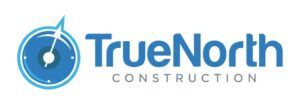Last in, first out or the LIFO accounting method is used to describe how inventory has been sold. It records the most recently produced items as sold first. This method is prohibited under the International Financial Reporting Standards (IFRS), the accounting laws followed in the European Union (EU), Russia, Canada, Japan, India, and many other countries. The United States is the only country that allows this accounting method because it follows the Generally Accepted Accounting Principles or GAAP.
There are two alternatives to the LIFO accounting method for inventory costing: first in, first out (FIFO), and the average cost method.
In FIFO accounting, the oldest items in the inventory as recorded as sold first. In the average cost method, the weighted average of all units available for sale is taken during the accounting period. That its average cost is used to determine the cost of goods sold (COGS) and ending inventory.
During inflation, or times when prices are increasing, it can be helpful for companies to use LIFO because they can take advantage of paying lower taxes. Many companies with large inventories, such as retailers and automobile companies or dealerships, use LIFO.
How Does LIFO work?
With LIFO, businesses record their newest products and inventory as the first items to be sold. The opposite of the LIFO method is FIFO, where the oldest inventory is recorded as the first item sold. Although the business may not be literally selling the newest or oldest item in its inventory, it uses this assumption for the purpose of cost accounting. If the business has the same cost of buying inventory every year, there would be no difference whether they use LIFO or FIFO. However, costs change because, for most products, the price increases every year.
What Companies Benefit from LIFO accounting method?
Businesses that sell items or products that increase in price every year can greatly benefit from using the LIFO cost accounting method. When prices increase, businesses that use LIFO can match their revenues better to their latest costs. They can also save on taxes that they would have accrued under other forms of cost accounting, and they can take on fewer inventory write-downs.
In other words, almost any industry that deal with rising costs can benefit from the LIFO accounting method. For instance, many pharmacies and supermarkets use LIFO because almost all goods they keep in their inventory experiences inflation. Many convenience stores—particularly the ones that sell fuel and tobacco—choose to use LIFO because the cost of those products have increased significantly over the years.
Disadvantages of LIFO
Those who disagree with the LIFO method claim that it distorts inventory figures on the balance sheet during times of high inflation. They also claim that business owners are granted an unfair tax break when they use LIFO because it can lower net income, and as a consequence, lower the taxes that a company has to pay.
Example of LIFO
Let’s say there’s a company called Happy Cup, Inc. that purchases coffee cups and mugs from wholesalers and sells them online. Happy Cup’s cost of goods sold (COGS) is different when it uses the LIFO method compared to when it uses FIFO method. In the first case, the price of wholesale mugs increases from 2016 to 2019. In the second scenario, prices of wholesale mugs decrease from 2016 and 2019.
However, in 2020, Happy Cup sold 250 mugs online. Under the LIFO accounting method, the COGS is equal to: the total cost of the mugs bought from the wholesaler in 2019, plus the cost of 100 mugs purchased in 2018, plus the cost of 50 of the 100 mugs purchased in 2017.
Under the FIFO method, COGS is equal to: the total cost of 100 mugs purchased in 2016, plus the cost of 100 mugs purchased in 2017, plus the cost of 50 of the 100 mugs purchased in 2018.
The LIFO Method Helps Lower Tax Bills During Inflation
The higher COGS under the LIFO method lowers net profits and, as a result, leads to a lower tax bill for Happy Cup, Inc. This is the reason why the LIFO method is controversial—its detractors argue that during times of inflation, LIFO grants companies with an unfair tax holiday. But proponents of this accounting method say that any tax savings the company receives is reinvested and have no real impact to the economy. In addition, proponents explain that a company’s tax bill when operating under FIFO is unfair due to inflation.
With LIFO Accounting, There are Fewer Inventory Write-Downs
The final reason why a lot of companies choose to use the LIFO method is that they get fewer inventory write-downs with it during times of inflation. An inventory write-down happens when the inventory appears to have decreased in price below its carrying value. Under the Generally Accepted Accounting Principles or GAAP, inventory carrying amounts are recorded on the balance sheet either at its historical cost or the market cost, depending on which is lower.
The market cost is restricted between an upper and lower bound: the net realizable value (this refers to the selling price, less reasonable costs of completion, and disposals) and the net realizable value save for the normal profit margins. During times of inflation, the carrying amount of the inventories recorded on a balance sheet already shows the oldest costs of carrying. They are also the most conservative of the inventory values. Thus, under the LIFO method, inventory write-downs are usually unnecessary and not always pursued.
Furthermore, because write-downs can decrease a company’s profitability (which happens when you increase the costs of goods sold) and assets (due to decrease of inventory), it negatively affects solvency, profitability and liquidity ratios as well. GAAP doesn’t allow reversals of write-downs. Because of this, companies that are subject to GAAP must make sure all write-downs are done out of necessity because these can have lasting consequences.
Conclusion
To sum it up, the LIFO accounting method helps reduce taxes and match revenue with cost. During inflation, companies might find it a good idea to use LIFO cost accounting over FIFO, because they can save on taxes and match their revenue to their latest costs better.









 The 2024 virtual Men’s Round Table will be held Q4, 2024, date TBD.
The 2024 virtual Men’s Round Table will be held Q4, 2024, date TBD.













